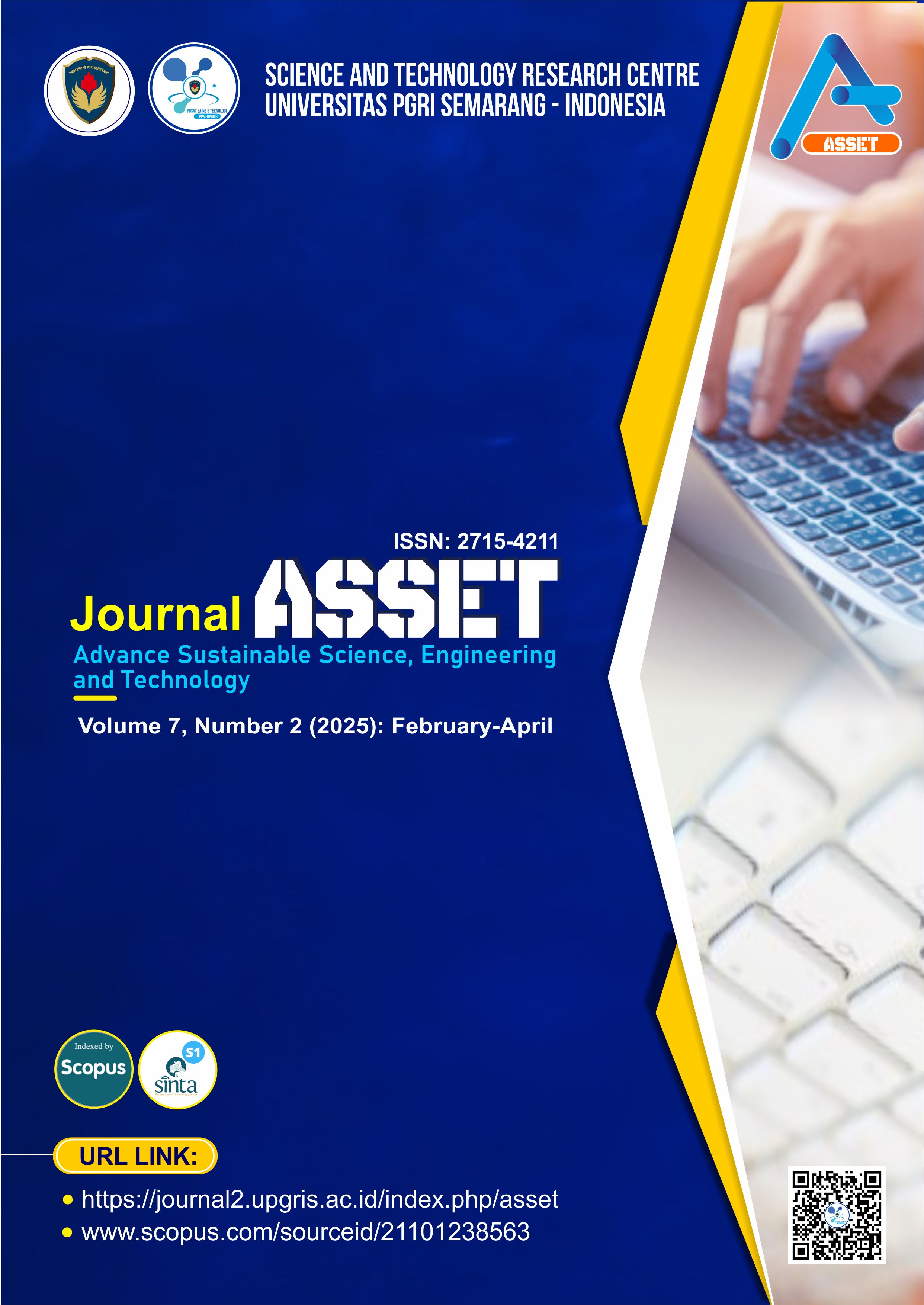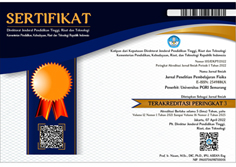Evaluating Compressed Sensing Matrix Techniques: A Comparative Study of PCA and Conventional Methods
DOI:
https://doi.org/10.26877/h26m6b34Keywords:
Compressed Sensing, Principal Component Analysis (PCA), Data Dimensionality Reduction, Signal Processing, Measurement Matrix, Image Compression, Signal Reconstruction Techniques, Data AnalyticsAbstract
This research examines the performance of various compressed sensing matrix techniques, with a focus on Principal Component Analysis (PCA) compared to conventional methods. By applying these techniques to a range of high-dimensional datasets, we assess their effectiveness in reducing data dimensionality while preserving essential information. Our results demonstrate that PCA consistently outperforms traditional methods in terms of both accuracy and computational efficiency. These findings have significant implications for fields such as signal processing, image compression, and data analytics, where efficient data representation is critical. The study provides a framework for selecting the optimal dimensionality reduction technique, enabling improvements in processing speed and accuracy in practical applications.
References
[1] J. M. Duarte-Carvajalino and K. E. Barner, "Adapted Compressed Sensing for Single-Particle X-ray Diffraction," IEEE Transactions on Signal Processing, vol. 68, pp. 2547–2560, 2020.
[2] J. Zhang, Q. Wang, L. Lin, and Z. Wang, "Compressed Sensing Recovery with Graph Convolutional Networks," IEEE Transactions on Neural Networks and Learning Systems, vol. 32, no. 5, pp. 2002–2015, 2021.
[3] Q. Sun, X. Bai, and F. Zhou, "Adaptive Compressed Sensing for Efficient Multi-User Transmission in Wireless Sensor Networks," IEEE Transactions on Vehicular Technology, vol. 70, no. 5, pp. 4911–4924, 2021.
[4] Z. Yang, W. Dong, G. Shi, and X. Wu, "Joint Sparse Representation and Deep Dictionary Learning for Hyperspectral Compressed Sensing," IEEE Transactions on Image Processing, vol. 29, pp. 4942–4956, 2020.
[5] Y. Liu, X. Tian, W. Ma, and J. Ma, "Nonconvex Compressed Sensing for High-Dimensional Data Using Alternating Minimization," IEEE Transactions on Signal Processing, vol. 68, pp. 3572–3587, 2020.
[6] H. Rao, F. Liu, Z. Lu, and Y. Ma, "A PCA-based Approach for Compressed Sensing MRI Reconstruction," IEEE Transactions on Medical Imaging, vol. 41, no. 2, pp. 456–467, 2022.
[7] Z. Chen, Y. Wang, and Y. Wu, "Compressive Sensing of Hyperspectral Images Using Deep Convolutional Neural Networks," IEEE Geoscience and Remote Sensing Letters, vol. 17, no. 5, pp. 787–791, 2020.
[8] Y. Zhang, Q. Guo, Z. Wang, and J. Zhu, "Data-driven Compressed Sensing for Fast MRI," IEEE Transactions on Medical Imaging, vol. 40, no. 12, pp. 3401–3412, 2021.
[9] Z. Liu and W. Liu, "Compressed Sensing-Based Image Compression with Deep Learning," IEEE Access, vol. 9, pp. 55948–55958, 2021.
[10] Palaniappan, Mathiyalagan & Annamalai, Manikandan. (2019). Advances in Signal and Image Processing in Biomedical Applications. 10.5772/intechopen.88759.
[11] Ali, R., Manikandan, A. & Xu, J. A Novel framework of Adaptive fuzzy-GLCM Segmentation and Fuzzy with Capsules Network (F-CapsNet) Classification. Neural Comput & Applic (2023). https://doi.org/10.1007/s00521-023-08666-y.
[12] V. A.R, S. David, E. Govinda, K. Ganapriya, R. Dhanapal and A. Manikandan, "An Automatic Brain Tumors Detection and Classification Using Deep Convolutional Neural Network with VGG-19," 2023 2nd International Conference on Advancements in Electrical, Electronics, Communication, Computing and Automation (ICAECA), Coimbatore, India, 2023, pp. 1-5, doi: 10.1109/ICAECA56562.2023.10200949.
[13] I. T. Jolliffe and J. Cadima, "Principal Component Analysis: A Review and Recent Developments," Philosophical Transactions of the Royal Society A: Mathematical, Physical and Engineering Sciences, vol. 374, no. 2065, pp. 20150202, 2016.
[14] Annamalai, Manikandan & Muthiah, Ponni. (2022). An Early Prediction of Tumor in Heart by Cardiac Masses Classification in Echocardiogram Images Using Robust Back Propagation Neural Network Classifier. Brazilian Archives of Biology and Technology. 65. 10.1590/1678-4324-2022210316.
[15] M. Elad, “Sparse and Redundant Representations: From Theory to Applications in Signal and Image Processing”. Springer, 2010.
[16] Ali, R., Manikandan, A., Lei, R. et al. A novel SpaSA based hyper-parameter optimized FCEDN with adaptive CNN classification for skin cancer detection. Sci Rep 14, 9336 (2024). https://doi.org/10.1038/s41598-024-57393-4.
[17] D. P. Wipf and B. D. Rao, "Sparse Bayesian Learning for Basis Selection," IEEE Transactions on Signal Processing, vol. 52, no. 8, pp. 2153–2164, 2004.
[18] Kolli, Srinivas & V., Praveen & John, Ashok & Manikandan, A. (2023). Internet of Things for Pervasive and Personalized Healthcare: Architecture, Technologies, Components, Applications, and Prototype Development. 10.4018/978-1-6684-8913-0.ch008.
[19] Manikandan, Annamalai, M,Ponni Bala. (2023). Intracardiac Mass Detection and Classification Using Double Convolutional Neural Network Classifier. Journal of Engineering Research. 11(2A). 272-280. 10. 36909/jer.12237.
[20] R. Tibshirani, "Regression Shrinkage and Selection via the Lasso," Journal of the Royal Statistical Society: Series B (Methodological), vol. 58, no. 1, pp. 267–288, 1996.
[21] R. R. Coifman and D. L. Donoho, "Translation-invariant De-noising," in Wavelets and Statistics, Springer, New York, NY, 1995, pp. 125–150.
[22] J. M. Duarte-Carvajalino and K. E. Barner, "Adapted Compressed Sensing for Single-Particle X-ray Diffraction," IEEE Transactions on Signal Processing, vol. 68, pp. 2547–2560, 2020.
[23] A. A. Zahraa, N. H. Utami, S. Hartini, and R. Purwaningsih, "Measuring Risk Factor Analysis Using PCA Method in Batik Business (Case Study: SMEs Batik Cirebon)," Advance Sustainable Science, Engineering and Technology (ASSET), vol. 5, no. 1, pp. 0230111-01–0230111-08, 2023.











